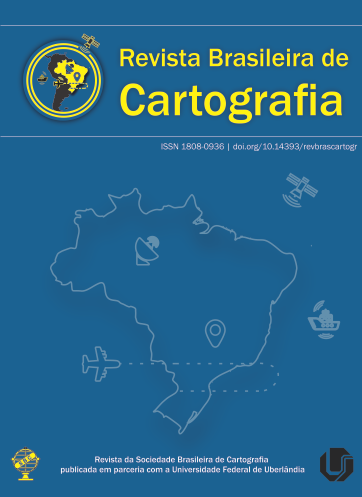Análise do GNSS PPP multi-constelações com uso dos sistemas GPS, GLONASS e Galileo
Conteúdo do artigo principal
Resumo
Dentre os sistemas que compõem o GNSS, estão completamente funcionais o GPS e o GLONASS. Além disso, encontram-se em desenvolvimento o Galileo e o BeiDou, sendo que o Galileo dispõe de 17 satélites operantes. Desta forma, o objetivo deste trabalho é investigar o desempenho de combinações multi-constelações envolvendo GPS, GLONASS e Galileo em quatro estações da RBMC, utilizando o método de posicionamento PPP. Para alcançar esse propósito, foram realizadas avaliações das acurácias planimétricas e altimétricas de estações multi-constelações, pertencentes à RBMC, abrangendo os 30 dias do mês de abril de 2018. Os dados foram editados no freeware GFZRNX a fim de obter arquivos com intervalos de 60 e 180 minutos de rastreio, contendo apenas dados GPS, GPS e GLONASS, GPS e Galileo e, a combinação dos três sistemas. Os dados foram processados a partir do software científico Bernese, versão 5.2. Os resultados mais acurados, tanto na planimetria quanto na altimetria, foram proporcionados pela tradicional integração GPS/GLONASS. Em segundo lugar, a combinação GPS/GLONASS/Galileo mostrou-se promissora, evidenciando sua interoperabilidade no método de posicionamento PPP.
Downloads
Detalhes do artigo
Seção
Autores que publicam nesta revista concordam com os seguintes termos:
- Autores mantém os direitos autorais e concedem à revista o direito de primeira publicação, com o trabalho simultaneamente licenciado sob a Licença Creative Commons Atribuição que permite o compartilhamento do trabalho com reconhecimento da autoria e publicação inicial nesta revista.
- Autores têm autorização para assumir contratos adicionais separadamente, para distribuição não-exclusiva da versão do trabalho publicada nesta revista (ex.: publicar em repositório institucional ou como capítulo de livro), com reconhecimento de autoria e publicação inicial nesta revista.
- Autores têm permissão e são estimulados a publicar e distribuir seu trabalho online (ex.: em repositórios institucionais ou na sua página pessoal) a qualquer ponto antes ou durante o processo editorial, já que isso pode gerar alterações produtivas, bem como aumentar o impacto e a citação do trabalho publicado (veja "O Efeito do Acesso Aberto").





